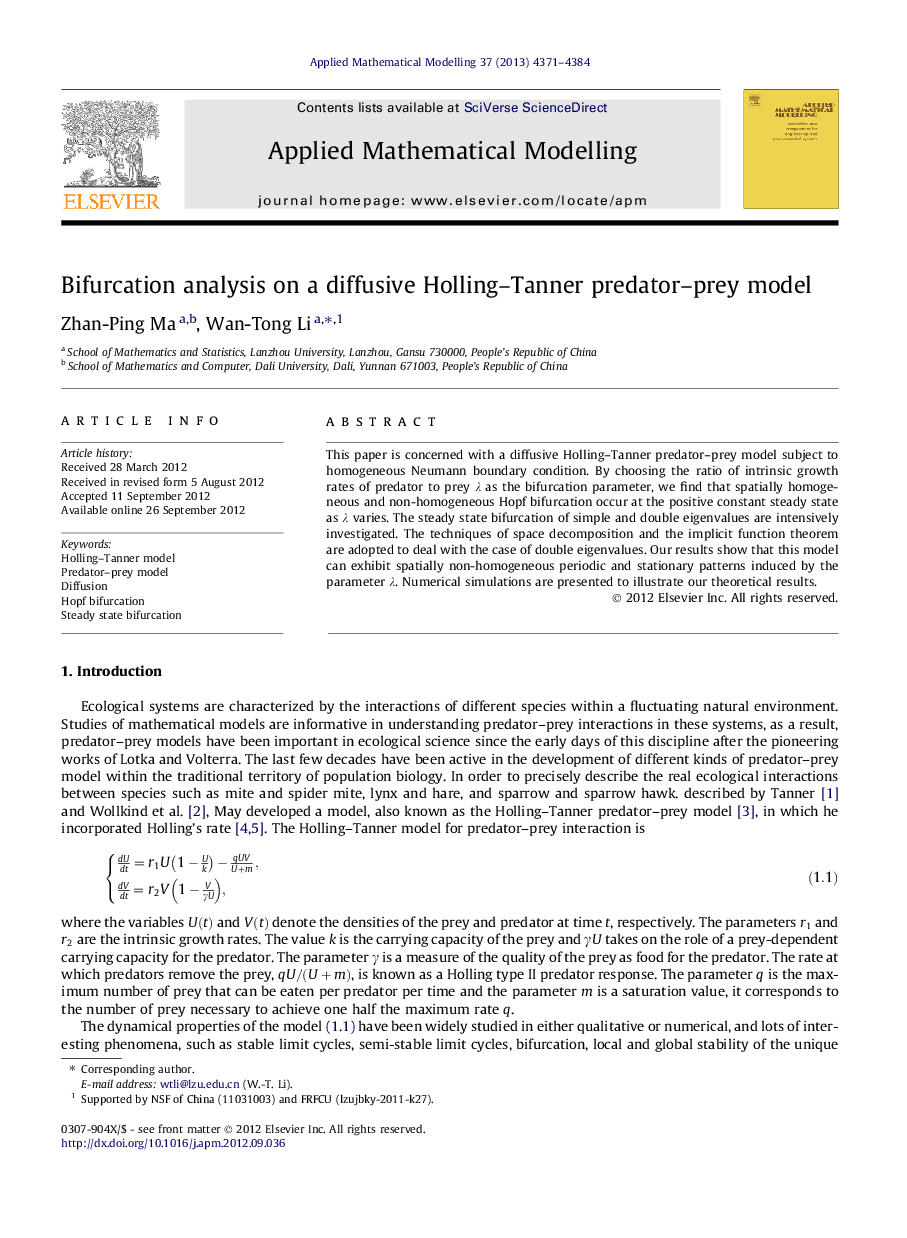| Article ID | Journal | Published Year | Pages | File Type |
|---|---|---|---|---|
| 1704698 | Applied Mathematical Modelling | 2013 | 14 Pages |
This paper is concerned with a diffusive Holling–Tanner predator–prey model subject to homogeneous Neumann boundary condition. By choosing the ratio of intrinsic growth rates of predator to prey λ as the bifurcation parameter, we find that spatially homogeneous and non-homogeneous Hopf bifurcation occur at the positive constant steady state as λ varies. The steady state bifurcation of simple and double eigenvalues are intensively investigated. The techniques of space decomposition and the implicit function theorem are adopted to deal with the case of double eigenvalues. Our results show that this model can exhibit spatially non-homogeneous periodic and stationary patterns induced by the parameter λ. Numerical simulations are presented to illustrate our theoretical results.
